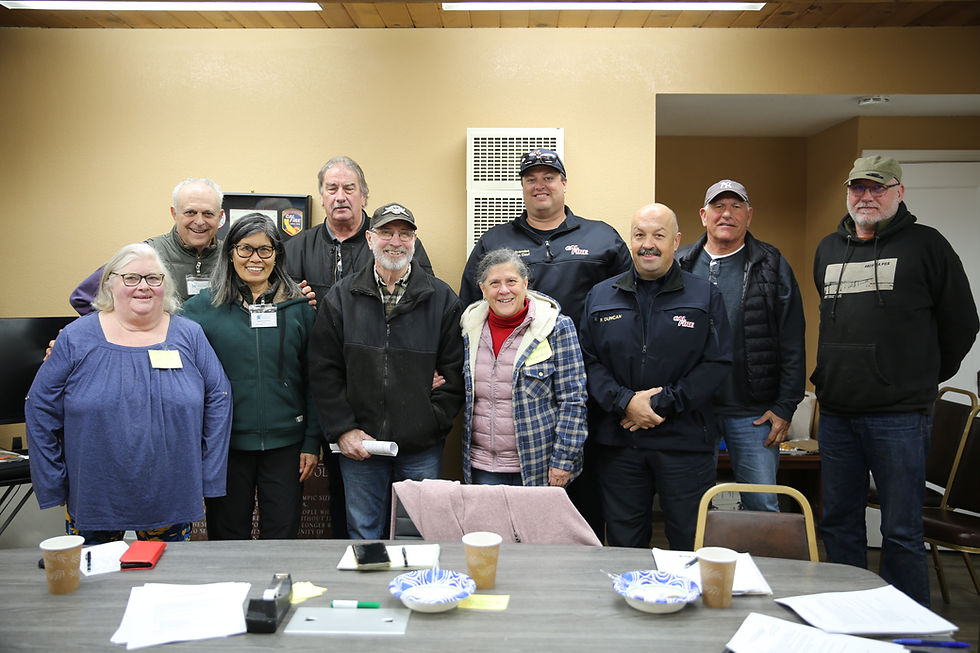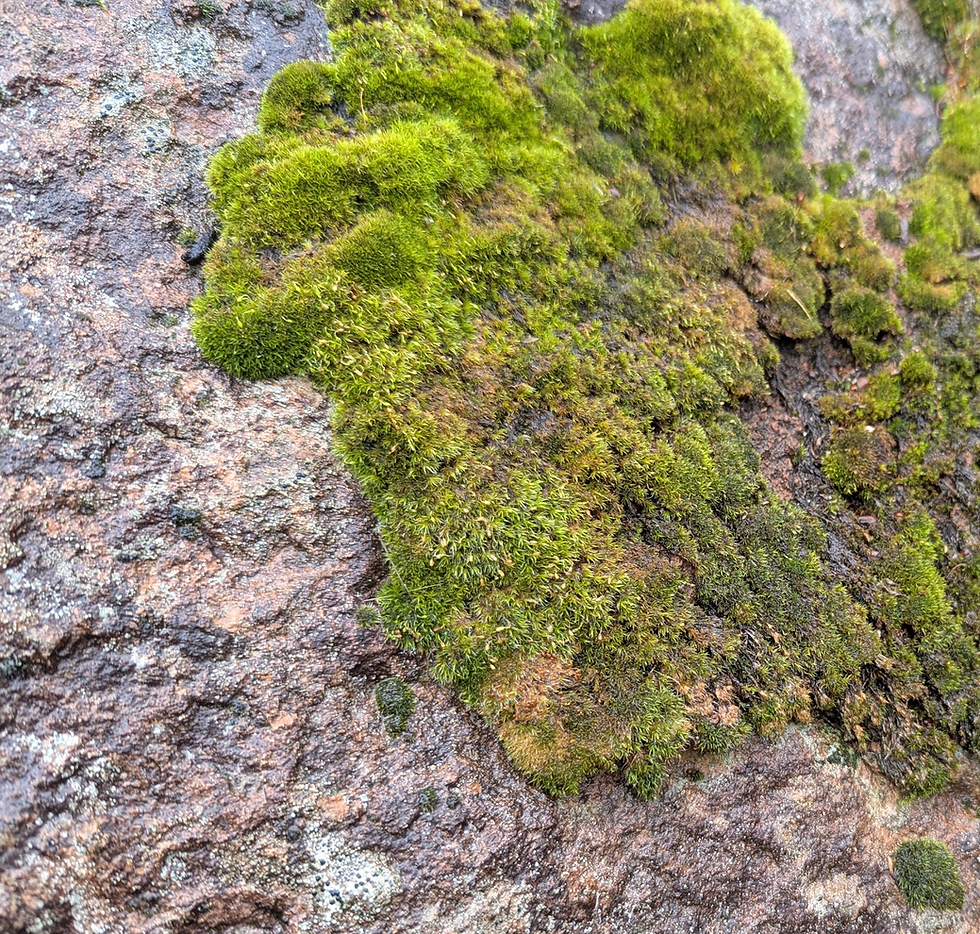What is a CWPP?
CWPPs address wildfire risks and hazards and lay out a roadmap of action. They focus on reducing fuel levels and "hardening" structures to reduce their flammability. First developed 20 years ago, CWPPs have been adopted by Counties, Cities, and Fire Districts across the country. The Lake County CWPP was first adopted in 2009 and updated in 2023, with significant help from SSCRA and other partners.

A Hyperlocal Plan for Cobb
CWPPs can also be created by local communities and SSCRA has recently received a federal grant to do this for our Cobb Mt. Area. This new Plan will take a detailed look at the special features, challenges and opportunities that we have in Cobb:
Close consultation with Tribal partners
SSCRA will build on relationships we have established with the local Pomo tribes whose ancestral territories included the Cobb Mt. area. Pomo tribes have a long history of forest stewardship, "caring for all our relations", that includes a sophisticated practice of seasonal burning - bringing "good fire" to the ground during the wet season to protect the forest from catastrophic wildfire in the dry months.
A local business development plan
There is a tremendous amount of labor needed to restore our forests to its pre-settlement wildfire-resistant condition. Thousands of tons of excess forest growth must be reduced to recreate a balanced ecosystem. The new CWPP will provide a thorough business case analysis for local businesses to do this work.
Comprehensive threat analysis
As with traditional CWPPs, the new plan will analyze the state of our local forest, including levels of accumulated brush, local topography and wind patterns and identification of vulnerable local structures.
Community Involvement
A significant portion of the forest analysis will be done by a cadre of experienced local volunteers who will "ground-truth" existing databases to ensure an accurate portrait of local conditions. A broad range of community partners and four public meetings will provide input and guidance as the Plan is developed.
Online Data Access
The new Cobb CWPP will be available online, and show the status of priority projects.

SSCRA is excited to embark on this next example of our commitment to "Hyperlocal" community self-reliance, building our community capacity to optimize our local resources as well as make use of resources from outside. Since the Valley Fire in 2015 SSCRA has taken a lead role in building our community's strength to thrive in the midst of a changing world in the decades to come.
Four Firewise Communities® Recertified in Cobb
Four Cobb neighborhoods have earned national recognition as Firewise Communities® for community work performed in 2024.
This year, Cobb View, encompassing Adams Springs, Summit, Emerford, and Hobergs, will focus on home hardening and host a Dumpster Day with the local Lions Club. They will also distribute trailer chain covers. Contact Wendy Collins at firewisecobbmt4@gmail.com for details.
The Rainbow Estates Mesa Meadow Firewise Group (or REMM, formerly Firewise Cobb Mountain Group 2) will hold its annual Broom Busters clearing day on March 29 at 9:00 am, earlier than their usual National Fire Preparedness Day event in May. Contact Cindy Leonard at cobbfirewisegroup2@gmail.com.
Loch Lomond Firewise Community has hosted educational events, work parties, and fundraising dinners to support brush clearing in their mostly quarter-acre parcels. Contact Michael Peterson at mrp0@outlook.com
Following two structure fires last year, Seigler Springs will offer training on using household hoses and metal rakes to prevent spot fire spread. Contact Magdalena Valderrama at magdalenavh@sscra.org for more information.
The recertification will be valid for all of 2025, which can qualify community residents for insurance discounts. To get involved and learn how to help or receive assistance, reach out to the community chairs listed above.
All four communities will host community events, particularly around the first Saturday in May, National Wildfire Preparedness Day. Firewise USA® recognition helps communities organize and prioritize wildfire safety. This designation can lead to homeowner insurance discounts for USAA members and similar arrangements with other insurers in California.
Our Inspirations: Combining by Nora Bateson

One of the guiding principles of our work at SSCRA has been to understand our community as a "complex adaptive system" - a term used in systems science for things like a coral reef, or a brain, or a stock market - things that have so many interconnected parts that they are impossible to describe, let alone predict. We used some of this approach in our work on the Cobb Mt. Development Strategy, using "Seven Community Capitals" to describe some of the complexity of the community. One of the pioneering figures in systems science was Gregory Bateson through his work in cybernetics, communication theory, and his interdisciplinary approach to understanding complex systems.
His daughter, Nora Bateson has carried his work into the 21st century, doing pioneering work that brings the fields of biology, cognition, art, anthropology, psychology, and information technology together into a study of the patterns in ecology of living systems. Her latest book "Combining" is a multi-channelled report from the boundaries of this work. She brings together a masterful mix of expository essays, poetry and abstract art (by several artists including Leslie Thulin and Vivien Leung) to explore the many fractal elements of what is being called "the polycrisis" of the contemporary world. We are re-reading this book for the second time now and appreciating the complex play of insights she offers. We'd love to hear of your responses to this work and how you see it playing out in the community. Email us at directors@sscra.org.
Beyond Tech: Community Fire Preparedness
The devastating wildfires in Lake County (2015-2019) and Los Angeles (2025) demand a new culture of fire, one where every community member, regardless of background, actively participates in wildfire safety. While the circumstances of each fire vary, they all highlight the need for continuous improvement in mitigation strategies.

For too long, we’ve ignored the wisdom of indigenous fire management practices, which have been developed over millennia. We must now integrate this knowledge with modern techniques. And we need more than technological advancements or forest management. Lake County needs a fundamental shift: a culture where everyone, regardless of neighborhood, political affiliation, sexual orientation, race, age, or any other demographic, understands their role in wildfire preparedness and how that role changes over time.
We must build a new, inclusive fire safety culture. Give everyone access to information and resources, and empower everyone to contribute. From creating defensible space to participating in community education programs, all our actions, even our kids’, grandkids’, and neighbors', count. A culture where we all share responsibility for wildfire safety means we will learn and teach future generations to love this land even more while we build stronger communities and lessen the damage of future fires. This isn't just about saving houses; it's about protecting lives and livelihoods and building a safer future together. Fire is powerful, but we can learn to respect it and work together.


Comments